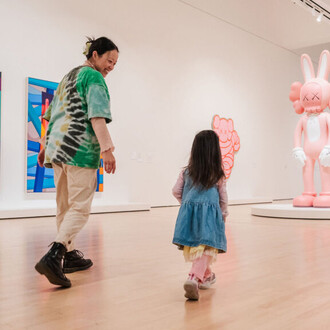When Antoine Watteau painted Pierrot, everybody knew the type. Pierrot was a clown, one of the most popular characters in the French commedia dell’arte. Watteau’s 1718-19 portrait preserved Pierrot’s sensitive persona for centuries after the commedia dell’arte disbanded, providing inspiration to artists ranging from Honoré Daumier to Jean-Léon Gérôme.
Today Watteau’s painting remains an attraction for connoisseurs visiting the Louvre, but neither Pierrot nor Watteau can compete with Dave Chappelle or Banksy in terms of celebrity. The same can be said of masterpieces such as Jan Vermeer’s Girl with the Pearl Earring and John Singer Sargent’s Portrait of Madame X. Neither woman has the face recognition of Cate Blanchett or Susan Sarandon.
Having admired these historic paintings for decades, Sheldon Greenberg wonders whether they might gain new admirers if they were to be reconceived as contemporary art. Greenberg’s speculation was prompted by a book given to him by his wife. The Louvre: All the Paintings included Pierrot and many more personal favorites. “I decided, okay, I’m going to pick the works that I really love, and I'm going to take the part of those paintings that I find really fascinating,” he recalls. Focusing on the drooping figure of Pierrot and the dynamic confidence of Sargent’s Madame X, Greenberg critically broke down what he saw and systematically reconstituted it in his own contemporary style.
Greenberg is a painter with a masterful command of his medium, a stylistic virtuoso who has spent the past several decades exploring novel techniques and approaches to composition. Modernism is pleased to present Interlaced Viewings, featuring twenty of his radically postmodern reinventions of important paintings created over the past five hundred years.
Although some of the originals are currently in the Louvre’s formidable collection, Greenberg has also chosen masterpieces from museums including the Mauritshuis in the Hague (custodians of Vermeer’s Girl with the Pearl Earring) and the Metropolitan in New York (the location of Sargent’s Portrait of Madame X, a painting he first admired while studying at the Art Students League in the 1990s).
As eclectic as these works may be, Greenberg has unified them through his use of visual devices carried over from his previous bodies of work. Principal among these are his use of silkscreens, graffiti, and mute charts, as well as stripes and polka dots.
Integrated into his beautifully expressionistic impasto brushwork (and often partially covered by it), the silkscreens are especially important on both a visual and conceptual level. Often taking Greenberg’s photographs of palm trees as their subject, they provocatively disrupt the traditional spatial organization of paintings from past centuries. “The trees blow out the whole idea of atmospheric perspective,” he says. “It’s not my intention to have a realistic scene.”
The introduction of silkscreens also upsets viewers’ sense of time, at least from an art-historical point of view. Evocative of Robert Rauschenberg’s 1960s Combines, and enlisting a photographic process that didn’t exist in the era of Botticelli or Sargent, they add a postmodern layer to the paintings.
Self-referential and often ironic, postmodernism has provided artists in many media with a means to resituate the past in the present, combining creative renewal with playful commentary. The postmodern turn is taken further by Greenberg through his choice of titles, which come from popular songs – his interpretation of Pierrot becomes Clowns to the Left of Me, Jokers to the Right in tribute to Bob Dylan – and silkscreened cartoon characters and playfully cartoonish graffiti. “Some of those cartoon images are more easily readable than the main composition,” Greenberg remarks with teasing irony. For instance, his version of Hals has the lute player performing for Minnie Mouse and Watteau’s Pierrot shares the stage with a silkscreened Betty Boop. (As a matter of bringing Pierrot up-to-date, Greenberg takes a greater leap than did Daumier or Gérôme.)
But it’s the mute chart, which Greenberg renders in mesmerizing patterns of stripes or polka dots, and sometimes integrates into compositions as patterns on subjects’ garments, that carries his work back to its conceptual origin. “The mute chart came from teaching,” he explains. “This is how students learn to create a mute by mixing complementary colors.” Through the mute chart, Greenberg suggests that his works might teach us how to see again: to recognize the genius of his artistic antecedents, and perhaps to appreciate the present through their eyes.
















